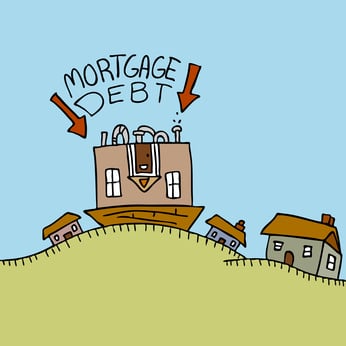Few topics have sparked more debate among housing market watchers than mortgage principal reduction. Its proponents tout debt forgiveness as one of the surest ways to counteract the housing slump. Its critics label it a handout that would cost taxpayers and spur further defaults.

Borrowers need help, but would it turn the market upside down? © John Takai - Fotolia.com
The arguments for and against are only going to get hotter. In 2010, principal reduction was included in just 11 percent of those mortgage modifications without government guarantees. But by the fourth quarter of 2011, the number had jumped to 40 percent, according to a report by mortgage research firm Amherst Securities Group. And it's likely to rise still further: The "robo-signing" settlement reached in February requires the country's five major mortgage servicers to perform at least $10 billion in write-downs, mostly on loans that they own, to atone for illegal foreclosures.
Now principal reduction is nipping at the heels of Fannie Mae and Freddie Mac. Many consumer advocates and policymakers are calling for the twin mortgage guarantors to adopt the loss-mitigation tactic, but so far the mortgage giants' conservator, the Federal Housing Finance Agency, has resisted.
To be eligible for principal reduction you must be behind on your mortgage payments. This creates an incentive for people who could otherwise afford their payments to stop making them in the hopes of getting a better deal through a loan mod. . FHFA Acting Director Edward DeMarco has said that this is one reason why he has resisted allowing Fannie Mae and Freddie Mac to use principal reduction.
"A key risk in principal forgiveness targeted at delinquent borrowers is the incentive created for some portion of these current borrowers to cease paying in search of a principal forgiveness modification," DeMarco said at a speech at the Brookings Institution in April.
All forms of mortgage modification, not just principal reduction, carry some of the same risk, but critics say that principal reduction offers more of an incentive for a homeowner to strategically default. Principal reduction, unlike getting a break on an interest rate, offers a lasting reward in the form of increased home equity. Also debt forgiveness puts a homeowner closer to having a home value that exceeds his or her loan, which makes it much easier to sell.
Whether or not you buy into the argument of moral hazard often depends on whom you hold responsible for the housing bust. Kathleen Day, a spokesperson for the Center for Responsible Lending, puts it on the lenders.
"It's the banks that were bailed out," she said. "It is they who incurred the moral hazards. They got to keep all their executive pay, so they privatized the gain, but when it came time to bail out, they socialized the risk."
Five years into the housing crisis, Day said, there is no evidence that principal reduction, which has been used by some lenders, has spurred many homeowners to default: "It was a bogus argument then, and it is a bogus argument now."
Lawmakers, government officials and consumer advocates continue to pressure the FHFA -- which has controlled Fannie and Freddie since the government bailed them out in 2008 -- to approve principal reductions. Previous FHFA studies found that principal reduction would end up costing taxpayers billions of dollars. However, a recent analysis upended that conclusion. It found that, even after accounting for the cost of HAMP subsidies paid by taxpayers, a debt-forgiveness program would save the public $1 billion, The Wall Street Journal reported.
Nonetheless, FHFA Acting Director DeMarco announced Tuesday that taxpayer-owned Fannie and Freddie, which back 60 percent of U.S. mortgages, still wouldn't approve a principal-reduction program. He said that the potential costs of a debt-forgiveness program outweighed its potential benefits, mentioning specifically the possibility that such a program could create a moral hazard where homeowners would default just to qualify for principal forgiveness.